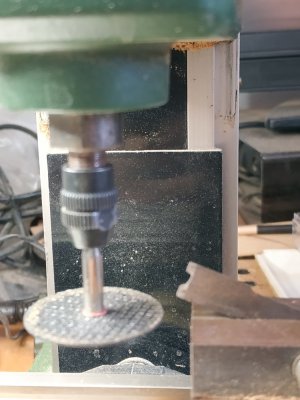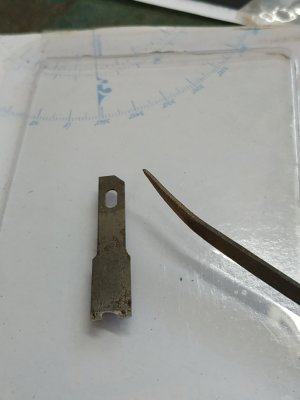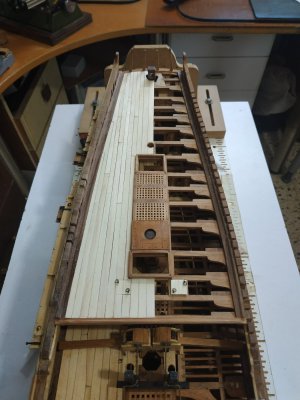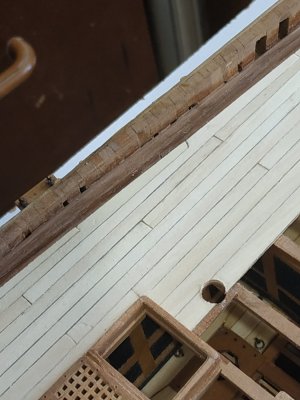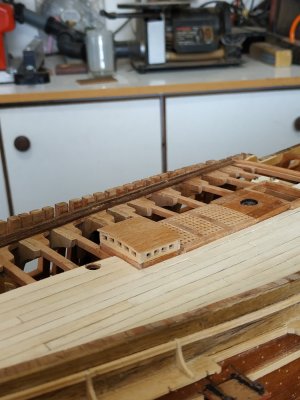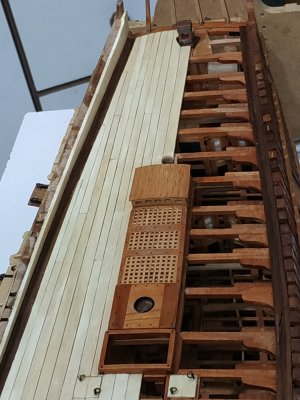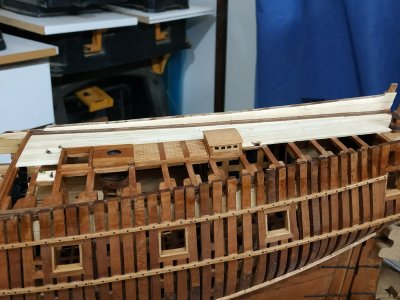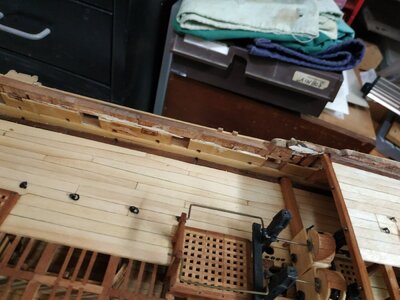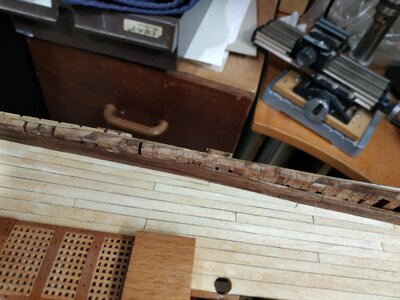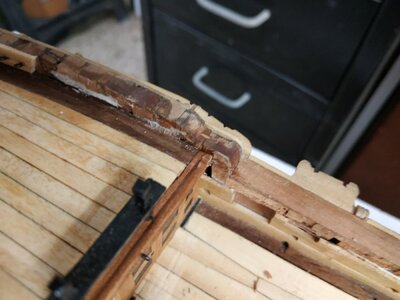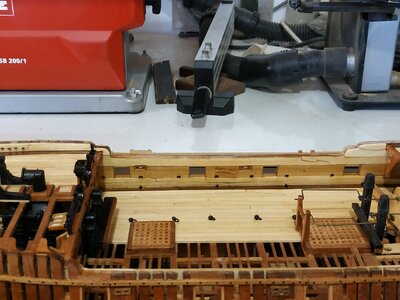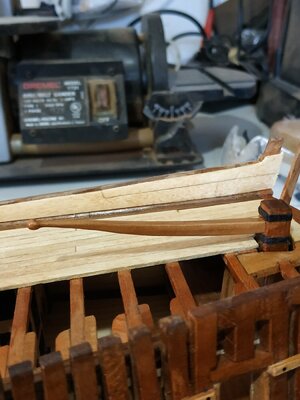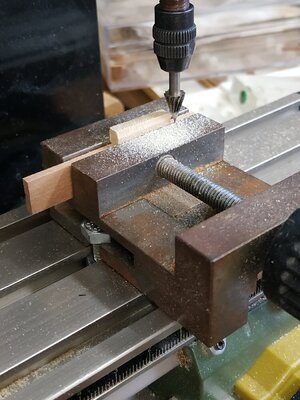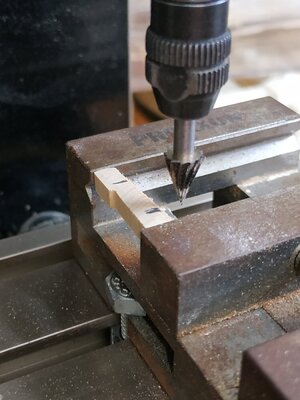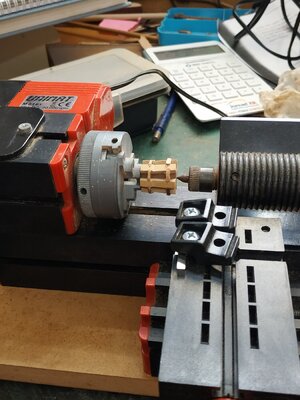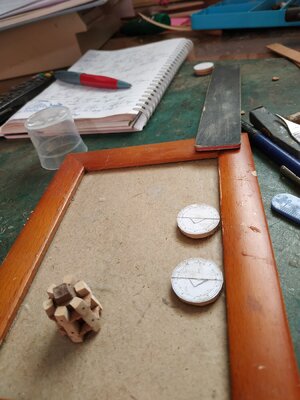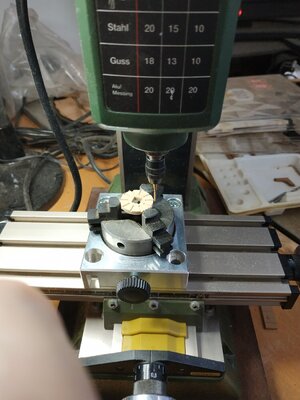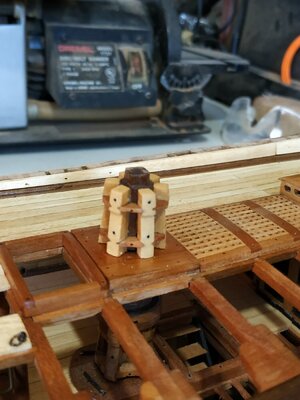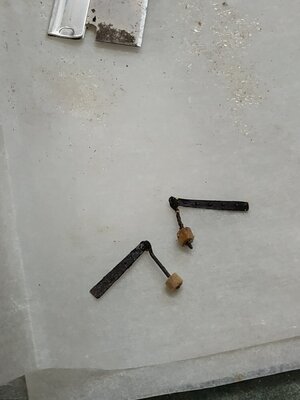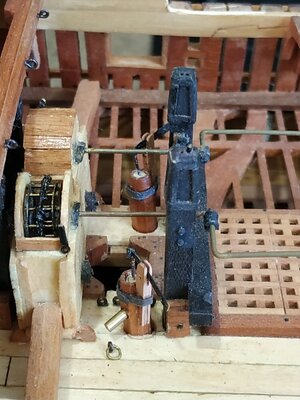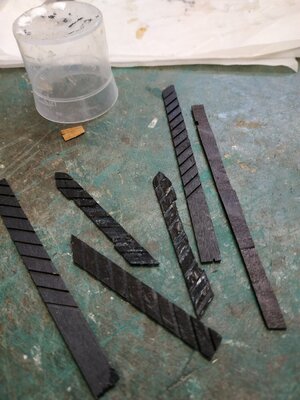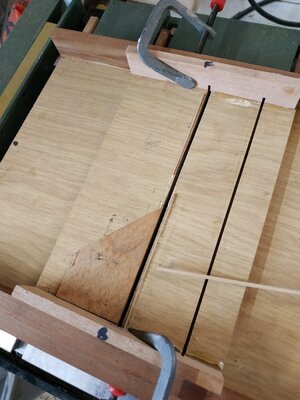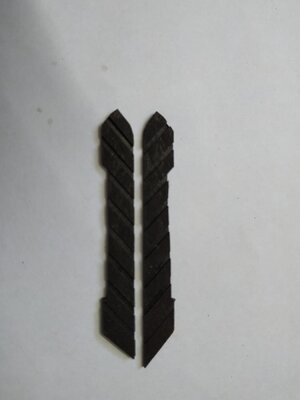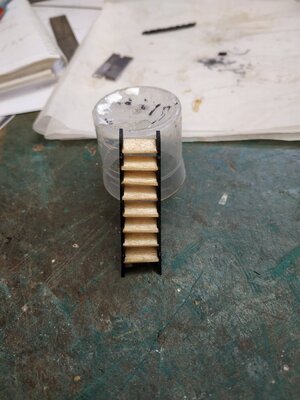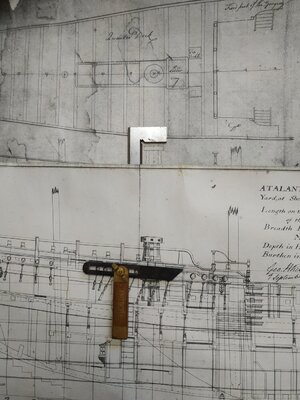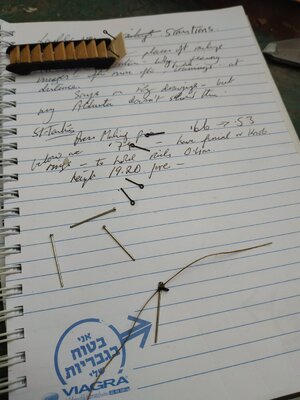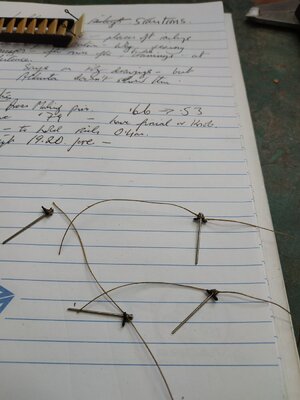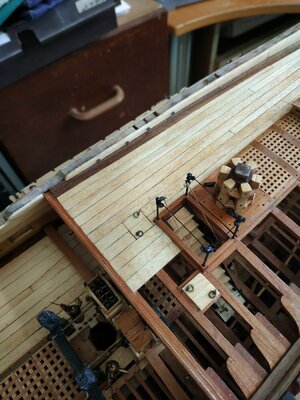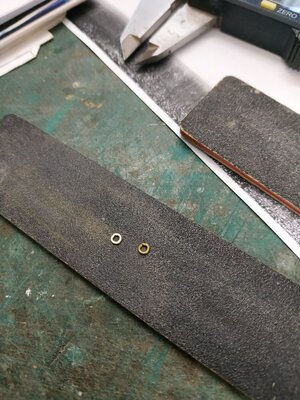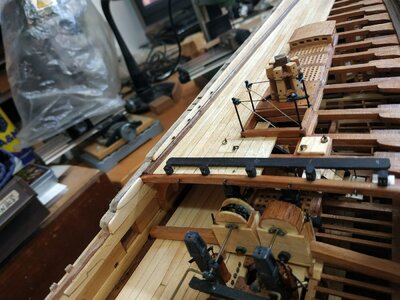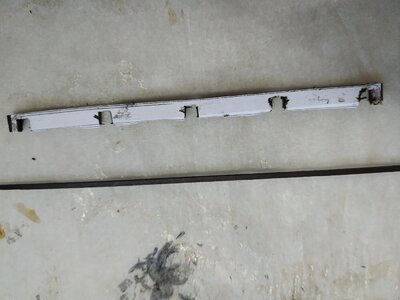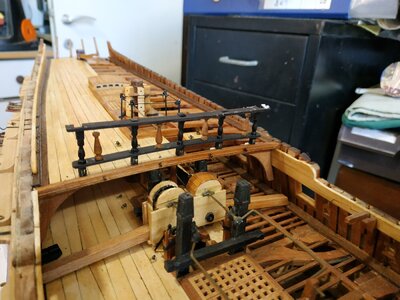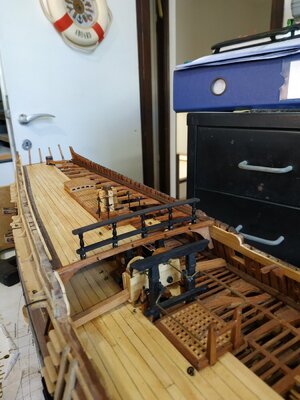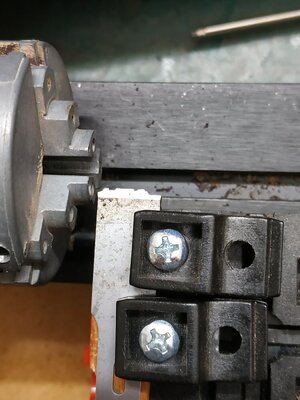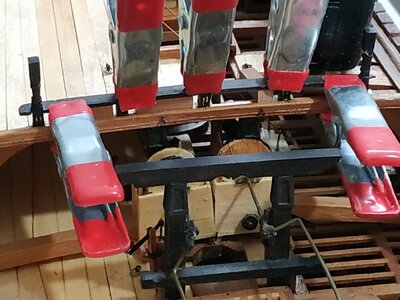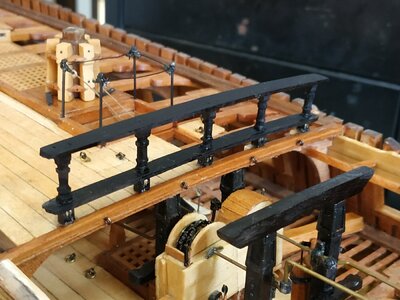Companion Top.
Some discussion in TFFM on style appropriate for type and age.
A clerestory type is illustrated.
The coamings for the base are already in place
.Height 5.5mm including rounding up 1mm.
A veneer “sandwich” with “glass” filling was again suggested, as was used for Bulkheads.
There are small openings for the lights, which I found impossible to make without breaking the walls. I then tried using some thin boxwood 1.10mm as a single layer - more successful.
I used the veneer for the roof as a single piece, but the grain gives the appearance of narrow planks.
When all dried, I realised I left out the “glass”.
Maybe return to put things right when I’ve more patients.
One of those (superficially) simple builds that are ultimately most frustrating.
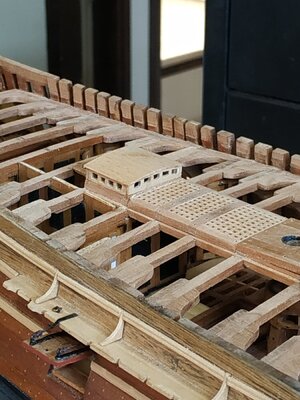
Some discussion in TFFM on style appropriate for type and age.
A clerestory type is illustrated.
The coamings for the base are already in place
.Height 5.5mm including rounding up 1mm.
A veneer “sandwich” with “glass” filling was again suggested, as was used for Bulkheads.
There are small openings for the lights, which I found impossible to make without breaking the walls. I then tried using some thin boxwood 1.10mm as a single layer - more successful.
I used the veneer for the roof as a single piece, but the grain gives the appearance of narrow planks.
When all dried, I realised I left out the “glass”.
Maybe return to put things right when I’ve more patients.
One of those (superficially) simple builds that are ultimately most frustrating.




